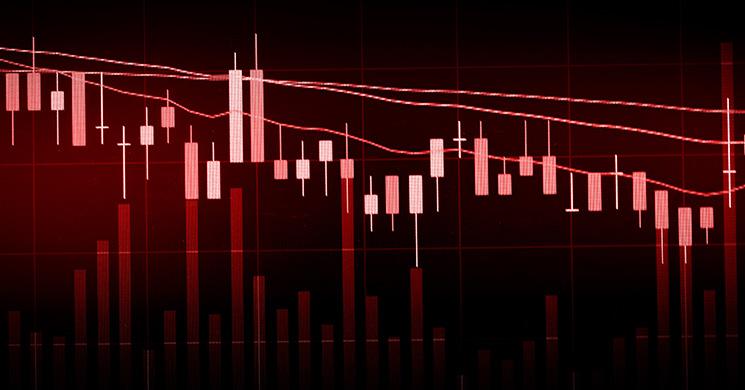
The Japanese market technician uses other charts besides a standard candlestick chart. The standard candlestick chart requires the open, close, high and low price of a session. There is a variation of this technique which is referred to as a Japanese average chart.
Figure 1 Heikin-Ashi candles
Called a Heikin-Ashi chart it literally means “average bar”. Using this chart style, it will take out the noise short term variations in the chart. They can give you a much clearer, and shaper picture of the current trend strength. The candles will stay green when the market is in an uptrend, and stay red when the market is correcting.

Figure 2 candlestick candles
The caveat to this type of chart is that it is based upon moving averages, and therefore, will lag behind a real-time chart data. We recommend using this chart type in conjunction with candlestick charts. The combination of using both chart types reveals insights neither one could accomplish alone.

Figure 3 - Candlestick vs Heikin-Ashi
Figure Three is a combination chart containing a Japanese average chart on the bottom and a candlestick chart on the top. A strong uptrend is marked by consecutive large bodied green candles all with no lower wicks. A strong downtrend is marked by consecutive large bodied red candles all with no upper wicks.
How to gauge strength trend?

Figure 4
When analyzing a candlestick chart, we search for patterns. Since there are so many patterns to look for, it is a much more complex procedure.
Japanese average charts excel at defining the ebb and flow of a trend, including the pivot point when a market reverses direction. They can recognize when trend strength is weakening or when trend weakness is strengthening.
During powerful trends, it is body size is the most important parameter to analyze. It measures the distance between the prior midpoint and current pricing, visually displaying expansion or contraction of a trend through body size.
The major parameters and components to focus upon.
1. Body Size. When body sizes increase incrementally candle by candle, in a cluster, it is visually displaying the trend growing stronger. The larger the candle, the stronger the trend. Large bodied candles with the appropriate absence of lower or upper wick indicates an extremely strong trend.
2. Absence or presence of wick. Strong downtrends typically contain a series of consecutive large red candles, with no upper wick. Strong uptrends typically contain a series of consecutive large green candles, with no lower wick.

Figure 5
3. Trend weakening and the pivot. What to watch for to confirm whether a trend is weakening and is about to change direction. The pivot is when candle color changes from green to red, or red to green. It can occur out of no where with large body sized candles preceding it, or occur after a trend weakening has transpired.

Figure 6
How to identify a weakening trend
As the trend begins to wane you will first notice a reduction in body size, which will can be followed by the return of an upper wick in red candles, and a lower wick in green candles.
A pivot occurs when the market reverses trend. This pivot very often occurs as a very small bodied candle like a candlestick doji.
When the Heiken-Ashi candle has a very small body it looks the same as a candlestick called a doji. This candle is created when a market opens and closes at the same, or close price. In both instances it is indicating the same thing, indecision. A crossroads when neither the bullish or bearish faction has control of the market.

Figure 7
The primary factor in interpreting changes in the strength of trend with a Heikin Ashi chart is to compare body sizes. As a trend weakens, the body size decreases, and the wick returns (the upper wick during a correction, and the lower wick during a rally).
If the market is trading sideways you will get alternating colors with upper and lower wicks on both green and red candles.
This visually conveys changes in trend. We see a market trend weaken as body size gets smaller. The wick may or may not appear, this depends on how the trend unwinds. You can also see this type of formation when a market is trading sideways. Uptrends, and upper wicks in downtrends.
The Heiken Ashi formula used to derive these average values is as follows:

Read more by Gary Wagner







